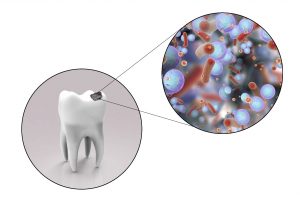A Patient-Focused Promise for Your Dental Care
A Dentist Explains the 5 Stages of Tooth Decay in Federal Way
November 11, 2018

Your teeth are one of your greatest assets. They enable you to speak clearly, eat comfortably, and smile confidently. Unfortunately, your precious pearly whites are vulnerable to decay, which is why it is so important for you to protect them. Let’s discuss how tooth decay in Federal Way progresses and how you can safeguard your smile against this serious problem.
Stage 1: White Spots
Bacteria interact with sugars and acids in your mouth, leading to plaque and tartar formation. Eventually, the plaque buildup, combined with a loss of calcium in the teeth, causes white spots to appear on the enamel. This is a mild form of tooth decay, and it may be reversible. If your dentist in Federal Way notices it during a checkup, they may coach you on how to adjust your oral hygiene habits in a way that may stop cavities from forming.
Stage 2: Enamel Decay
At first, the enamel decays beneath the tooth’s surface, but once the problem breaks the surface of the tooth, the problem has reached the point of no return. That is to say, once a cavity officially forms, it is no longer possible to repair the teeth with fluoride treatments or adjustments to your oral hygiene routine. You’ll need a filling to repair the tooth and stop the decay from worsening.
Stage 3: Dentin Decay
Dentin is the yellowish substance beneath the tooth enamel. It contains tubules that connect to the nerve inside the tooth. Therefore, your teeth may become extra sensitive or even cause you pain if decay reaches the dentin. At this point, a filling will likely still be a viable treatment option to strengthen the tooth and stop the decay from reaching the tooth’s innermost layer.
Stage 4: Involvement of the Pulp
When bacteria reach the innermost layer of the tooth, the pulp, it can cause severe irritation to the pulp’s nerve. It may also kill the blood vessels inside the tooth. The result of this process is often a severe toothache. In most cases, the best way to treat this problem is via root canal therapy, which cleans out the infected area and removes the tooth’s nerve.
Stage 5: Abscess Formation
When the bacteria sneak into the tooth’s root tip, a dental abscess may form. The infection can then spread to the surrounding bone and even cause systemic health problems. An abscess is a serious issue and may require emergency oral surgery.
Preventing Tooth Decay
If you want to stay at stage zero of tooth decay, it’s essential that you stick to solid oral hygiene habits. Routine checkups and professional cleanings at your dentist’s office are also vital. If you ever do develop a cavity, take advantage of the restorative treatments that your dentist offers so you can protect your precious smile and spare yourself from future pain.
How is your smile doing? Hopefully, you never have to face the ravages of advanced tooth decay.
About the Author
Dr. Drew Beaty is a dedicated, highly educated dentist who is proud to provide preventive and restorative treatments to residents of the greater Seattle area. To learn more about Dr. Beaty or to schedule a checkup, contact our office at 253-839-6544.
No Comments
No comments yet.
RSS feed for comments on this post.
Sorry, the comment form is closed at this time.
